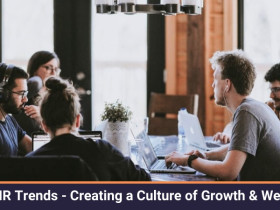There are various types of discrimination in the workplace which can occur as a one-time incident or an ongoing process significantly affecting your employees. Employers should take responsibility to ensure that their employees and the candidates applying for jobs in their companies are treated fairly.
With the rise in cultural and gender diversity in the workplace, employees of various ethnicities and backgrounds must work collaboratively to achieve the company’s objectives.
Today, the workplace has become more equitable, giving opportunities to people from different walks of life. Step into a modern workplace, and you will see people of different ages, races, sexes, and more.
Nonetheless, despite significant progress, discrimination in the workplace still exists. Discrimination in the workplace could cost employers thousands in legal costs. According to the United States Equal Employment Opportunity Commission (EEOC), more than 80,000 workplace discrimination accusations were filed in 2017, with victims receiving $400 million in compensation.
The EOCC defines and prohibits employment discrimination in multiple areas, including hiring, firing, salary, work assignments, promotions, layoffs, training, and benefits.
What is Discrimination in the Workplace?
Discrimination in the workplace occurs when an individual or group of individuals are treated unfairly or unequally based on their backgrounds or certain personal characteristics. Some of these characteristics include race, ethnic background, gender identity, age, impairment, sexual orientation, religious views, or even national origin.
Workplace discrimination can also happen between coworkers, employees, and their bosses or even with job applicants who can be denied their opportunity for employment based on their characteristics.
Discrimination is illegal, whether intentional or accidental, and authorities in any organization should ensure that adequate diversity training is provided to all the employees within the firm. This will help to create a workplace free of harassment and discrimination.
“Education is important because, first of all, people need to know that discrimination still exists. It is still real in the workplace, and we should not take that for granted.”
Alexis Herman
Difference between Discrimination and Harassment

As stated, under California’s Fair Employment and Housing Act (the “FEHA”), the distinction between workplace harassment and employment discrimination are as follows:
Workplace discrimination happens when someone in the workplace treats different employees differently based on the characteristics of race, color, national origin, religion, sex, age, marital and parental status, disability, sexual orientation, or genetic information.
Workplace Harassment occurs when someone harasses another person because of their gender, color, national origin, sexual preference, or other categories. This can include anything stated or written, as well as a graphic or physical contact.
Types of Discrimination in the Workplace
Even though workplace discrimination has been illegal for decades, it still occurs. Reporting occurrences, filing lawsuits, and exposing discriminatory practices are the only ways to stop workplace discrimination. The top nine most common types of workplace discrimination are shown below.
Do you know any of them?
1. Racial discrimination
Racial discrimination is illegal, as an employer cannot mistreat a job candidate or employee because of their race or any associated traits. Color discrimination is also a type of racial discrimination that occurs when someone is mistreated because of their skin color or complexion.
Even though the Civil Rights Act has safeguarded minorities from racial discrimination, race-based discrimination is still prevalent in today’s workplace.
Racial discrimination is so widespread that it accounts for more than one-third of all EEOC allegations each year. Certain minority groups are frequently overlooked at all stages of the job search—they are not hired, mentored, or promoted. Furthermore, they are subjected to discriminatory and unjust inspections and, in some circumstances, are wrongfully terminated (especially when they complain about it).
Whenever there are any complaints related to unfair treatment due to racism, sexual harassment or any favoritism, the HR role in creating and promoting diversity becomes vital as they are the ones who should take the right actions to solve these problems.
2. Gender discrimination
Gender discrimination occurs when people are treated unjustly because of their gender. Gender discrimination can take various forms: it might be a refusal to hire women, refusal to accept females at a leadership positions, not promoting women, female employees getting marginalized once they have children, and payment made less than their male counterparts.
According to the Equal Pay Act of 1963, businesses must pay men and women equally for equal work.
Women are often disciplined for being “assertive” or “persistent,” characteristics that most supervisors appreciate in their male employees. To demonstrate that gender discrimination is alive and well, look no further than the US’s largest corporations, where less than 5% of CEOs are women.
3. Disability discrimination
Under the Americans with Disabilities Act and the Rehabilitation Act., employers are not permitted to discriminate against existing or prospective employees based on any physical or mental disability or past medical condition, such as cancer; the company must also offer reasonable adjustments for these employees in the workplace.

However, disability discrimination remains one of the most prevalent claims filed with the EEOC. In 2019, for example, lawyers alleged disability discrimination or failure to accommodate a disability in one-third of all discrimination lawsuits. Discrimination of this sort might take the shape of misconceptions about a disabled person’s capacity to make the job, open hostility, or discriminatory regulations that disproportionately harm disabled people.
4. Pregnancy discrimination
Discrimination against pregnant or new moms is known as pregnancy discrimination. Some companies will refuse to hire a woman who is pregnant or intends to become pregnant. Other companies use pregnancy as a reason to criticize or fire their staff. Employers could also “eliminate” roles while pregnant employees are on leave or refuse to grant them leave.
Pregnancy discrimination can manifest as bias towards new mothers who resume and require accommodations to breastfeed or pump.
5. Age discrimination
Age discrimination is the discrimination of those over 40 and is one of the most common forms of job discrimination today. As the “baby boomer” generation matures and faces financial uncertainty in retirement, the EEOC has received increasing age discrimination complaints.

Age discrimination laws prohibit employers from showing age preferences in job postings, internships, or other company documents, such as promotion requirements.
The Age Discrimination in Employment Act protects employees over the age of 40. (ADA). Companies are also prohibited from discriminating against employees based on their age regarding perks, remuneration, and incentives.
6. Religious discrimination
Companies cannot discriminate against employees based on their religious views and practices. This discrimination commonly occurs as workplace harassment based on religious views, punishment for taking religious holidays and conducting religious observances, or “hiding” an employee from public-facing jobs due to religious clothing.
Employers must accommodate employees who require the time, place, or other facilities to practice their religion.
7. Skin Color discrimination
The Labour Law prohibits discrimination based on skin color.
No race should be favored or disfavored in the hiring process simply because they are a different color. Furthermore, an employee’s race or skin color should not be factored in training, promotion, or termination decisions.

This means employers should refrain from making broad generalizations about personal attributes based on their interactions with people of a certain race. This could include labeling all Caucasians as one stereotype or all individuals of African origin as another. This does not do justice to a certain job seeker’s or employee’s character and personality.
8. LGBT discrimination
In 2020, the United States Supreme Court ruled that an employer that terminates a gay or transgender employee violates Title VII of the Civil Rights Act. It is unlawful to deny equal pay, employment opportunities, or company benefits based on sexual orientation or gender identity.
9. Compensation discrimination
Compensation discrimination occurs when employees who perform equal work are paid differently. Compensation discrimination also happens when a disparity in pay is based on an illegal basis, such as race or gender. Compensation discrimination because of an employee’s membership to a protected group, such as race, disability, or gender, is prohibited under anti-discrimination laws.
Conclusion
Discrimination at the workplace is illegal. It hinders employee performance and destroys companies by driving smart and devoted employees out of the workforce or company. Companies must avoid discrimination to ensure a productive and pleasant workplace.
Discrimination may lead to dissatisfied employees and a terrible public image for the organisation. With the fight for equal chances and equal rights, today, there is no tolerance for unfair discrimination in recruiting, terminating, training, remunerating, and promoting employees.
And, if you want to avoid legal battles, retain a productive staff, and maintain a positive public image, you must prioritize preventing workplace discrimination.














Leave a Reply